DUBBO dairy farmer Erika Chesworth was expecting another shocker electricity bill. But when her latest bill came in at $135,000 – a whopping $45,000 increase on the previous year – she knew the dairy industry was in for a rough ride.
She is not on her own. Persimmon farmer Brett Guthrey, who is NSW Farmers’ Horticulture Committee chair, cites a member whose quarterly power bill has recently risen 30% to $60,000 – and that’s just for his irrigation pumps and coolroom.
“The power transmission, power production, energy production system in Australia is broken,” says Sunny Verghese, co-founder of global food company Olam International, the biggest producer of almonds in Australia.
“We have had a 50% increase in electricity costs from 2012 to today.”
National energy crisis
_preview.jpg)
Of course, it’s not just farmers who are feeling the pain. According to Rod Sims (pictured left, source: supplied), chair of the Australian Competition & Consumer Commission (ACCC), high energy prices are the biggest crisis facing the nation. Part of the problem, he believes, is that Australia is “overdoing” its focus on ensuring the reliability of energy supply, which is resulting in high costs.
“Let’s make sure that we keep the energy focus on affordability,” was his advice at The Australian’s Global Food Forum held in March in Sydney. While power outages are part of the equation, he warns, “We want to make sure we don’t overdo the conversation about the reliability of electricity. Most of those increasing network costs are due to concerns over the system not being reliable enough.”
His view is that the electricity industry needs to be able to run with some prospects of outages. “To have no risk of a blackout is too expensive.”
The ACCC will deliver its report into reforming the electricity industry by the end of June. It is also undertaking a three-year review of the gas industry, which it started last year.
Rod says energy retailers have raised concerns about the market power of the big three energy retailers – AGL, Origin and EnergyAustralia – in their discussions with the ACCC.
“We have a lot of the retailers who are not part of the big three, talking to us quite a lot. They are very concerned that the three big retailers are so vertically integrated,” he says, referring to the process where a company gains control of its entire supply chain.
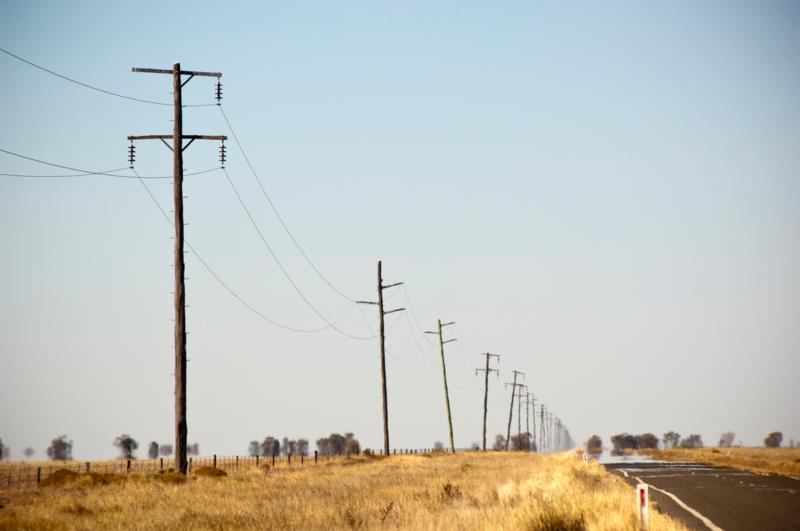 Rod Sims is concerned the big 3 energy companies are controlling too much of the supply chain. Source: Getty Images.
Rod Sims is concerned the big 3 energy companies are controlling too much of the supply chain. Source: Getty Images.
“When you have to buy energy [and are also concerned about] emission reduction and reliability, the more levers you’ve got, the better placed you are.”
Rod says the issue of energy policy will be discussed at the next Council of Australian Governments
meeting, which will look at a paper from the Energy Security Board on the federal government’s National
Energy Guarantee.
Energy pressures facing farmers
In the meantime, pressure on Australia’s farmers from energy prices is clear. The New Zealand dairy industry, which is dominated by food giant Fonterra, has the advantage of significantly lower labour costs and “significantly lower electricity costs”, Rod says.
It’s the same situation in other countries. Sunny Verghese of Olam International, told the Global Food Forum that Australia has the highest energy costs of any of the 70 countries in which Olam operates.
RELATED:
Fighting for a fair go on electricity prices
Sunny believes the high cost of
electricity is one of the main problems facing the nation’s agricultural industry. He says that 15% of the costs of the production of the company’s Australian-grown almonds consists of power and energy charges – and Olam is “completely helpless” to do anything about the situation.
Sunny believes the high cost of
electricity is one of the main problems facing the nation’s agricultural industry. He says that 15% of the costs of the production of the company’s Australian-grown almonds consists of power and energy charges – and Olam is “completely helpless” to do anything about the situation.
Rural NSW left in the dark
In rural NSW, the problems are compounded by the policies of big electricity providers, which concentrate all of their marketing efforts in the cities, says NSW Farmers’ chief economist Ash Salardini.
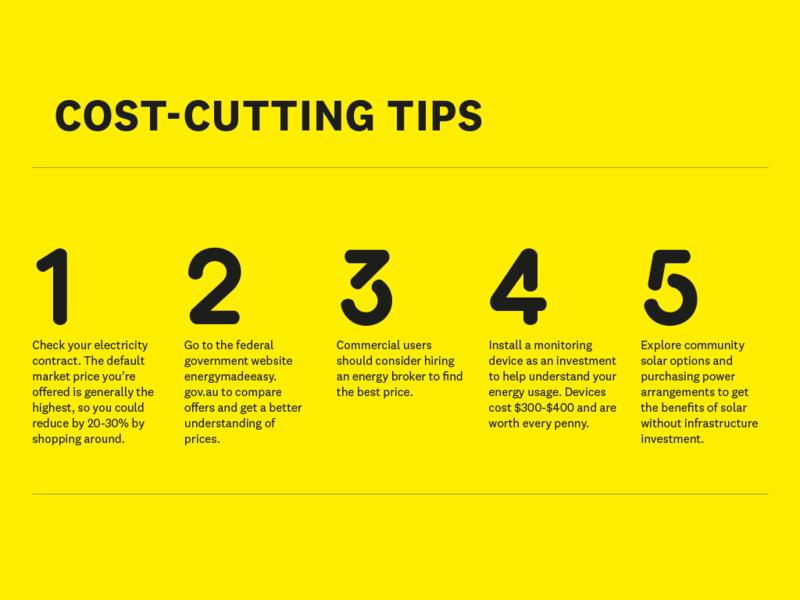 Ash Salardini’s top five energy cost-cutting tips.
Ash Salardini’s top five energy cost-cutting tips.
As a result, there is little innovation or policy flexibility once you cross the Blue Mountains. “It’s probably not worth their [retailers’] marketing efforts with a smaller user base in regional and rural NSW, compared to the few million users in urban areas,” says Ash.
“Regional users pay up to 25% more for their electricity and receive fewer discounts compared to urban consumers, indicating a serious lack of competition in the regional electricity market.”
“There’s different types of discounts for different areas and regional users can only get a 32% discount [from switching from the default standing market offer to the best market offer available] compared to urban users who can get up to 50%.”
Ash says the discount focus seems more pronounced around the heavily populated Ausgrid and Endeavour Energy network providers, which cover urban areas, with fewer discounts offered to Essential Energy customers. Essential Energy delivers network services to more than 800,000 homes and businesses across 95% of NSW.
An Essential Energy spokesperson says low customer density significantly impacts the cost to serve customers. “Essential Energy provides services to 1,500 local communities with more than 180,000km of powerlines,” the spokesperson says.
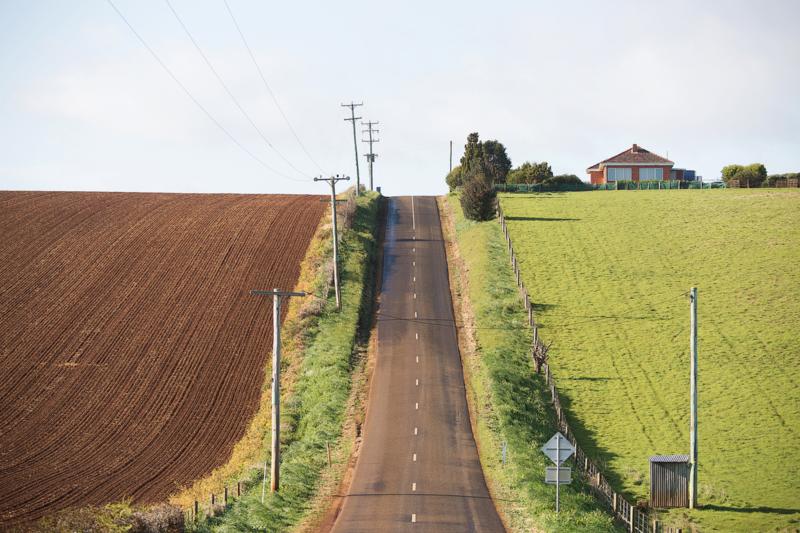 Essential Energy supplies a staggering 180,000km of powerlines. Source: Getty Images.
Essential Energy supplies a staggering 180,000km of powerlines. Source: Getty Images.
“In contrast, the two city-based NSW networks together operate around 80,000km of powerlines, supplying more than two million customers.”
The price difference to rural customers can be significant. Using the federal government’s Energy Made Easy comparison website, NSW Farmers reports that the best deal offered in 2017 by a large retailer to a typical household of four occupants in a regional area such as Tamworth was $2,396 per year. For a similar household in Darlinghurst in the centre of Sydney, the same retailer would only charge $1,808 – that’s a 25% price disparity.
Despite paying higher electricity costs, NSW Farmers reports that regional communities aren’t getting their fair share of government grants and subsidies. Nor is there enough research dedicated to reliable, cost-
effective energy alternatives.
RELATED ARTICLES ON ALTERNATIVE ENERGY:
-
Biofuels: Australian farmers’ untapped resource
-
Hydrogen-fuelled tractors: a clean energy option
-
The power of pig poo
Farmers miss out on renewable funding
Ash says it’s mostly large-scale renewable projects that are receiving federal government funding – not the initiatives that would have encouraged small-scale renewable energy systems on-farm, such as rooftop solar, heat pumps and wind and hydro systems.
“It’s just stupidity. The federal government should have made it a level playing field and cut the funding equally for small and large-scale projects,” he says.
RELATED:
Floating solar panels on farm dams
The Association says the Australian Renewable Energy Agency’s $400 million Regional Australia’s Renewables program in 2017 did not fund agricultural-related programs, despite nine separate projects being submitted by the sector. The bulk of the funds went to exploring renewables for mining operations.
It’s a disappointing outcome for farmers, since the agricultural sector has been one of the earliest adopters of renewable energy generation. Regional NSW’s uptake of photovoltaic solar generation ranges between 15-40% of all users, in comparison to urban uptake, which ranges between 10-20%.
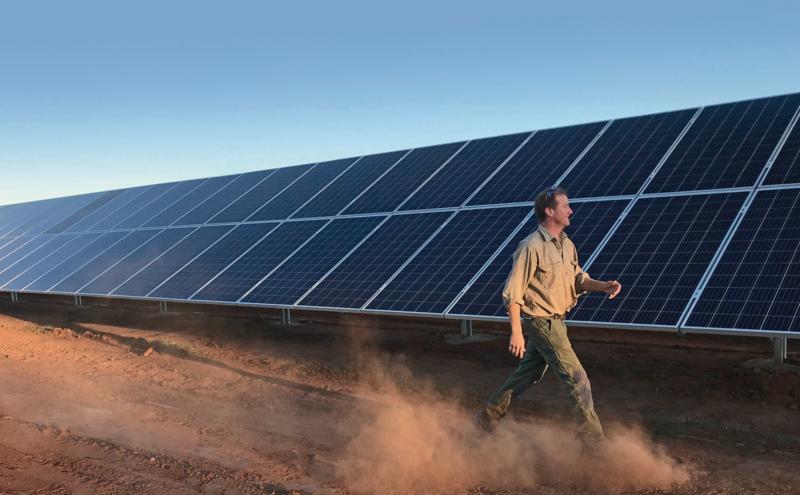 Farmers like John Elder use photovoltaic solar systems to save money on diesel. Source: ReAqua.
Farmers like John Elder use photovoltaic solar systems to save money on diesel. Source: ReAqua.
Changes to Australia’s Renewable Energy Target – a federal government policy designed to ensure at least 33,000 gigawatt-hour (GWh) of Australia’s electricity is generated from renewable sources by 2020 – mean investments in renewable generation for small-scale projects, such as those made by farmers, receive less than half the subsidy given to large-scale projects. The small-scale project subsidy is capped at $40 per megawatt-hour (MWh), while large-scale projects receive $90 per MWh.
The additional $50 per MWh provided to large-scale generation is ultimately passed on to consumers through higher electricity tariffs. Many farmers made considerable investments in on-farm renewable generation in the hope of cashing in on the proposed renewable feed-in tariffs, but were left high and dry.
National Energy Guarantee: what will it deliver?
Potentially improving the situation, the federal government is currently developing the new and improved
National Energy Guarantee recommended by the independent Energy Security Board.
Minister for Environment and Energy Josh Frydenberg tells The Farmer: “This will see Australian households $400 per year better off compared to today and wholesale electricity prices will fall on average by 23% to 2030.”
This guarantee has been designed without the use of subsidies, taxes or trading schemes – meaning, “medium-sized energy intensive businesses could save over $400,000 per year”, the minister says. However, many believe the earlier delivery of funding and capped subsidy indifference showed a poor understanding of the energy demand in agricultural and agribusiness sectors.
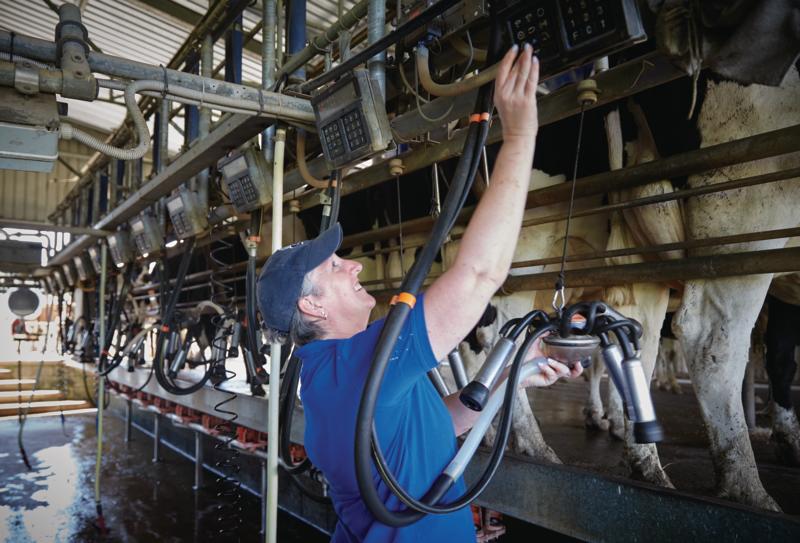 There is a poor understanding of the significant energy requirements of farms such as dairies. Photo by: Nick Cubbin.
There is a poor understanding of the significant energy requirements of farms such as dairies. Photo by: Nick Cubbin.
NSW Farmers would still like to see more progress, and recommends the implementation of a $5 million per year agricultural electricity innovation fund to enable large-scale feasibility studies into alternate modes of electricity delivery and pilot projects for innovative technologies. This would operate alongside another NSW Farmers proposal to have a Regional NSW Energy Working Group.
Read about NSW Farmers thoughts and proposals regarding the future of electricity in regional NSW
here.
Electricity prices reach crisis point
In the meantime, with electricity hitting crisis point across the state, and power prices doubling over the past decade, NSW Farmers’ Ash Salardini has particularly grave concerns for the rising pressure on electricity-dependent operations such as irrigators, dairy farms and intensive farming.
“The irrigation industry was presented with significant government subsidies to move to electric pumping [from diesel], but the financial benefit has been eroded due to the increased cost of running.”
From a
climate-change perspective, Ash says
agriculture’s water dependence will be ever increasing, coupled with the alarming predicted 1.5-2˚C global temperature rise. So it’s essential research is carried out to ensure viable solutions are found before distributing funds or allocating subsidies. “These electric systems are costing irrigators more to run than the diesel systems. So the way they’re drawing water now is really inefficient,” Ash says.
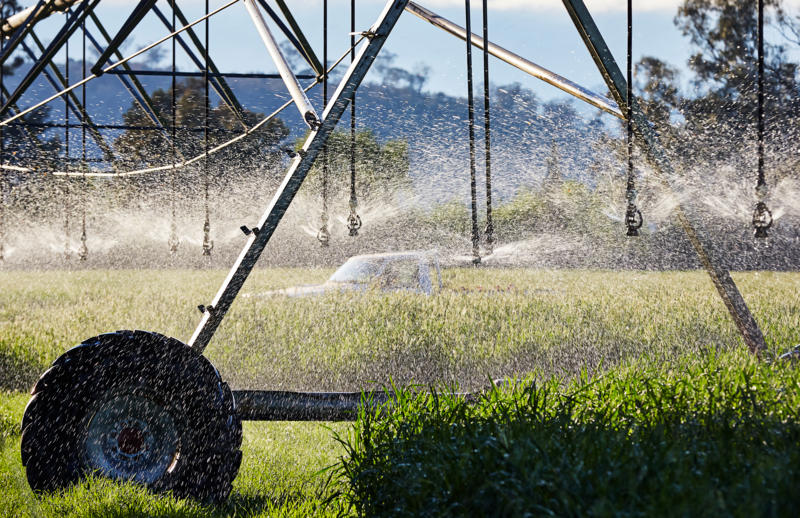 Irrigators face significant pressure from energy prices now their systems are electrical. Photo by: Nick Cubbin.
Irrigators face significant pressure from energy prices now their systems are electrical. Photo by: Nick Cubbin.
The whole electricity system is so ineffective that he questions how prices can ever come down. “The way we’re doing it is based on technology with a centralised [fossil fuel] based system, pumping out to the states.”
With the mix of generation technologies in regional NSW and “no new centralised system or little innovation in the near future” there is a real threat of a “death spiral” for the electricity network, says Ash.
This would involve a mass defection from the grid, with
users opting for decentralised energy generation and storage, which would inflict major social and economic costs on users who can’t afford self-sufficient energy infrastructure.
Social implications of energy affordability
Danielle Alexander, research principal for the
Institute for Sustainable Futures acknowledges this challenging scenario, saying we need to work through all the various policy and regulatory issues.
“What happens to those who can’t afford solar panels and are stuck on an ever more expensive grid? There is a social equity issue here.”
With such uncertainty on the horizon, energy users are urged to become more energy efficient, enabling smarter on-farm decision-making and greater financial reward. However, the complexity of the market and general lack of knowledge for viable alternatives, such as data availability resources to collect and analyse energy usage, demand management tools and discount eligibility and incentives, are restricting users from harnessing cost-effective savings.
 While energy management tools produce significant energy savings, the complexity is turning many people away. Source: Getty Images.
While energy management tools produce significant energy savings, the complexity is turning many people away. Source: Getty Images.
These information gaps, coupled with lack of skills and time to identify and implement energy efficiency measures may explain the surprising 68% of consumers who did not shop around for energy deals in 2016, according to the Independent Pricing and Regulatory Tribunal.
The road to energy efficiency
The 2017 Institute for Sustainable Futures Demand Management Incentives Review quotes an Australian Energy Market Commission estimate that the network could save between $4.3 billion and $11.7 billion across Australia over 10 years with investment in new technology.
Yet little research or government funding has been allocated to improve technologies in regional NSW that facilitate what has been dubbed the ‘3Ds’:
Demand response: which shifts or reduces energy during peak periods
Demand reduction: which manages energy more efficiently,
Distributed energy resources: localised electricity generation capacity.
To help resolve the shortcomings, Australian-based digital energy technology company
Wattwatchers is working with NSW Farmers to introduce innovative projects in regional areas to help users better understand their energy usage and ultimately cut their costs.
Wattwatchers’ CEO Gavin Dietz owns a small farm in the lower Hunter Valley, so he’s familiar with
the issues of poor energy delivery and is passionate about providing farmers with an affordable and
effective solution.
The company has developed a suite of energy management devices, known as Auditors, that can be installed into any electricity meter box or switchboard to support residential, commercial or industrial users. These compact yet powerful devices enable accurate monitoring and control of electrical circuits in real-time over the internet, delivered with an expanding range of hosting partners, platforms and software applications.
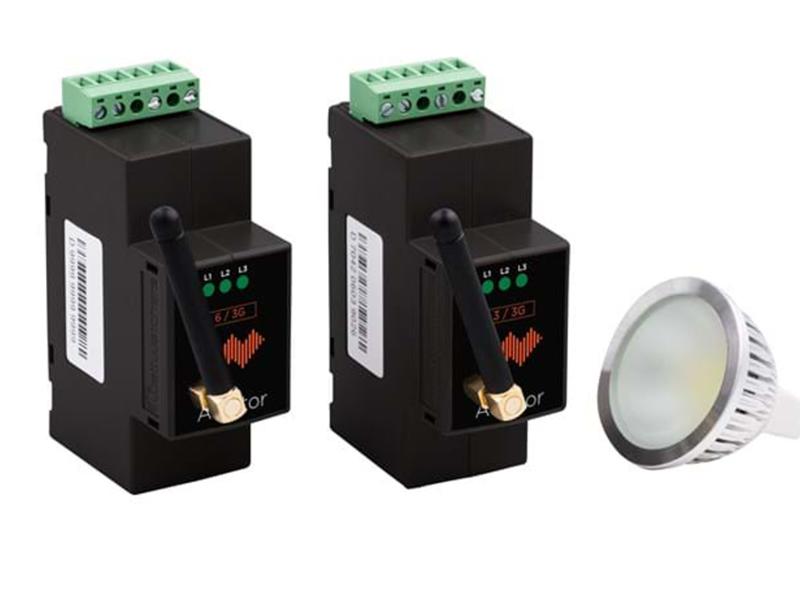 The Wattwatchers Auditor is designed to help energy users work out a strategy around charging batteries and reducing costs. Source: Supplied.
The Wattwatchers Auditor is designed to help energy users work out a strategy around charging batteries and reducing costs. Source: Supplied.
“The baseline is understanding how much energy people are using and then working out a strategy on how to reduce usage and costs,” says Gavin. “Energy efficiency is the most untapped resource. Quarterly bills don’t tell you anything of much use, so it can be hard to understand what’s driving high bills and to work out what to do about it. The best way to reduce your costs is to reduce your consumption, so if you can properly understand what you’re using, you can then become more energy efficient.”
“Reducing energy usage anywhere between 10-30% is considered ‘energy efficient’ and is achievable for many consumers.”
Farmers will typically have multiple buildings onsite and, in many cases, won’t know exactly where their energy is being chewed up. Gavin recommends users carry out an audit to distinguish which sheds or machinery equipment are costing them unnecessary dollars, especially if they’re being run 24/7. Items to watch out for include water pumps, lighting, outhouses, electric water pumps, machinery buildings and air compressors.
“Instead of creating new powerlines to multiple buildings, install Auditors to monitor energy across multiple sites. Then work out which would be most viable to take off and run completely by solar,” Gavin says.
“The more you can shift key loads under the solar curve, the more you can save. And if you don’t have solar, now is the perfect time to work out how much solar you would really need with an Auditor.”
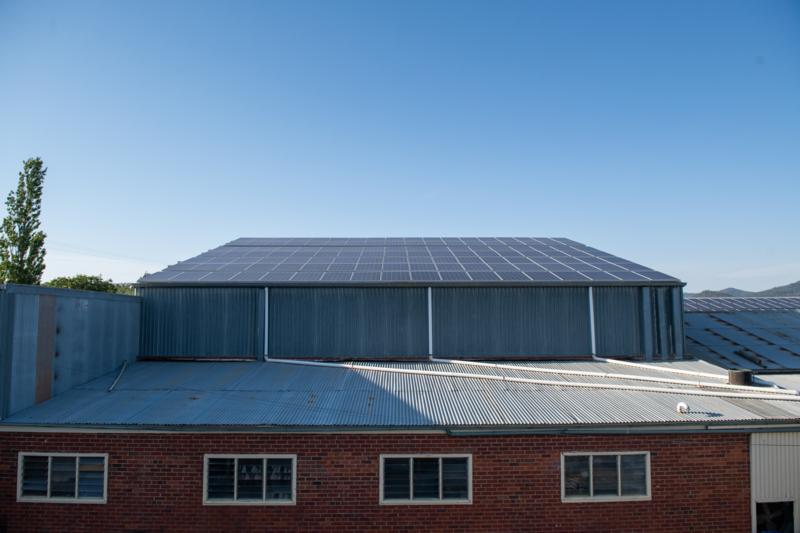 Solar installations are a clever way to cut down energy costs on farm with estimated payback periods of five years and under. The West family orchard at Nashdale (pictured above) have done just that. Photo by: Pip Farquharson.
Solar installations are a clever way to cut down energy costs on farm with estimated payback periods of five years and under. The West family orchard at Nashdale (pictured above) have done just that. Photo by: Pip Farquharson.
Gavin believes solar is a great investment and energy users are starting to realise the long-term value.
“Solar is a lot cheaper than it used to be – it’s only expensive if you do nothing with it. If you use solar to shift 70% under that curve then you’ll pay it off very quickly.”
Going off-grid
In terms of reducing reliance on the grid or going off-grid altogether, Gavin suggests those users at the end of the electricity line would benefit the most.
Edge-of-grid sites are the most likely to have supply problems including voltage fluctuations, and quite often that is where farmers experience regular outages from breaks or fires.
“I wouldn’t pay for extended poles from the main line; I would pay for batteries or solar, although batteries are still quite expensive and solar on its own can be a lot faster to pay off.”
For more information on our position go to
Action on energy.
Farmers share their struggles with energy prices
The dairy farmer: Erika Chesworth
Through the thick and thin of the unforgettable milk price wars and now unfathomable electricity price hikes, dairy farmers don’t seem to get a break. This was the case when Dubbo dairy farmer Erika Chesworth received her shocking electricity price jump from $90,000 per annum to $135,000.
The Chesworth family runs 800 purebred Holstein cows on the Macquarie River, near Dubbo, producing 8 million litres of milk each year at its on-farm processing plant for its award-winning brand, The Little Big Dairy Co.
_preview.jpg) Erika and Steve Chesworth at their dairy near Dubbo. Photo by: Pip Farquharson.
Erika and Steve Chesworth at their dairy near Dubbo. Photo by: Pip Farquharson.
Electricity costs are key, so when Erika’s energy provider offered her a new one-year contract that would have seen her costs increase a staggering 101% further, she turned to an electricity broker. By committing to a three-year deal, she kept the increase down to 85%. Even though it’s still a huge slug, it added up to a saving of more than $20,000 a year.
As NSW Farmers’ Dairy Committee chair, Erika knows all too well it’s a tough game for dairy farmers with increased processing costs that further erode their farmgate price, creating significant burden for enterprises that have high energy requirements.
RELATED:
Dairy farm thrives after deregulation
When approached about the renewal of her contract, Erika was pleasantly surprised her electricity broker was able to provide a better price than her energy provider. She says brokers have the buying power that consumers don’t have access to, and have helped her gain invaluable market insights that she would have otherwise been unaware of.
“Brokers go to market on our behalf to get the best possible price. Our bills are broken down into every minute tax. You see the actual power charges like your usage and line fees, and there’s about 10 different network charges.”
“There [also] needs to be broader education [for energy consumers] and market cost reduction.”
The fruit grower: Brett Guthrey

Persimmon farmer Brett Guthrey (Pictured left, source: supplied) dreams that one day the unusual and exotic sweet fruit will be in “every kid’s lunch box”. But as energy costs skyrocket, he’s feeling uneasy about his future farming business decisions.
Brett, from Cobbitty in the Greater Sydney region, who is chair of NSW Farmers’ Horticulture Committee, shares concerns about power costs with many others in his industry.
“The horticultural industry is heavily dependent on irrigation, processing and cold storage, making the cost of production comparable to the price you receive,” he says.
Farmers are experiencing shrinking margins with limited ability to control costs and very few viable alternatives to lessen exposure to the retail market.
“Growers are in no man’s land. We are hungry for viable alternatives to make the right long-term decision for energy investment. There’s a lot to choose from with gas, diesel, solar and mains power.”
“We’re price takers not price setters, and it’s having a massive impact on our bottom line.”
Brett says that while there’s been a proliferation of solar and micro-grid options, he’s also seen the return of diesel generators. “It’s the only viable option and it’s more measurable.”
Security of water supply is one of his greatest fears. On average, he pumps 140 megalitres from the Nepean River each season.

Persimmons (pictured right, source: Getty Images) require watering at night during peak energy price times, using micro sprays and a temperature gauge to prevent frost. “But going off-peak isn’t an option without battery,” says Brett, who acknowledges the batteries that can store generated energy for use at a later time are an expensive investment for many farmers.
He says he is faced with a scary thought: “Do I plant or not?” A fair question, considering a persimmon tree takes eight years to grow to fruit-bearing age and 15 years to harvest for commercial use.
Energy Guide: What it all means
- Solar PV
Photovoltaic (PV) systems that use cells to convert sunlight into electricity.
- Micro-grid
A small-scale power grid that can operate independently (with its own power resources, generation and loads) or in conjunction with the area’s main electrical grid.
- Off-grid
Energy self-sufficiency, no longer relying on the support from the electricity grid. Can be achieved via a stand-alone power system, or through mini-grids that provide a smaller community with electricity.
- Batteries
Allow for the storage of electrical energy – such as electrons generated from solar panels – in a chemical form, for later use.
- Behind the meter
A renewable energy-generating facility – solar PV system, combined heat power unit or wind power – that produces power onsite, not on the side of the electricity grid, helping users build greater energy independence.
- Embedded local network
A partnership between building owners and an energy retailer, involving the supply and distribution of power to properties within the development.
- Cost-reflective pricing
A tariff that better reflects the true cost of generation and supply, depending on time and demand.
From a climate-change perspective, Ash says
agriculture’s water dependence will be ever increasing, coupled with the alarming predicted 1.5-2˚C global temperature rise. So it’s essential research is carried out to ensure viable solutions are found before distributing funds or allocating subsidies. “These electric systems are costing irrigators more to run than the diesel systems. So the way they’re drawing water now is really inefficient,” Ash says.